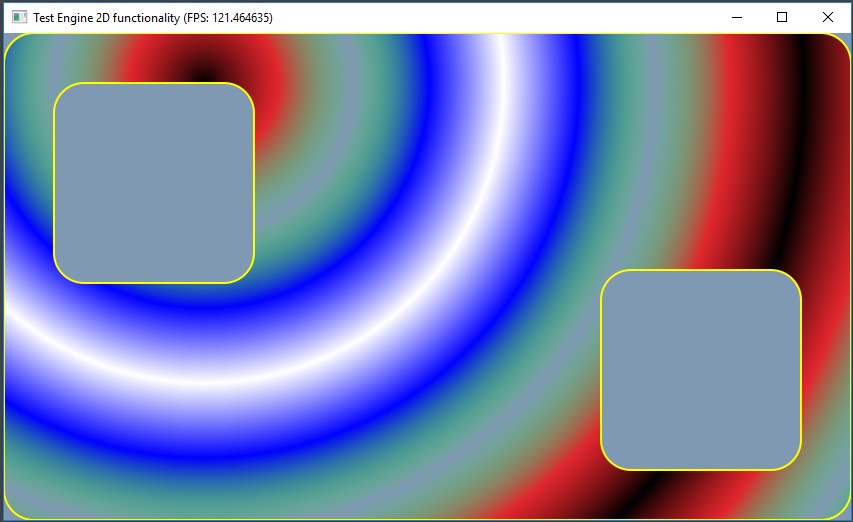Having a graphics context to draw something on the screen is not enough when you have to deal with complex scenes made of many textures, materials, shapes and assets of any kind. This is the reason why at some point of my framework development I introduced the concepts of Scene, Engine and Resources. Basically, a scene is a collection of elements, that can be 2D or 3D objects like shapes or meshes, while the Engine is a component used to handle the scene and resources is a set of textures, materials and assets. All these kind of resources are referenced by elements with UUID strings. 
I implemented different kind of Engines. The 'Generic' Engine is used to pre-process the scene to prepare it for the rendering or eventually for other kind of operation, like collision detection. When the generic engine iterates over the scene, all its internal geometries are transformed for being placed on the screen. The 'Graphics' Engine translates the transformed scene into a series of draw commands for the graphics context. The picture of above shows a simple test of the Engine, with an element that is a 2D shape composed by three sub-paths (1 contour and 2 holes), with a radial texture material for fill and a color material for the external stroke. Even if this test is simple, the Engine is designed to handle far more complex scenes and it will be used to create a whole 2D GUI from scratch.